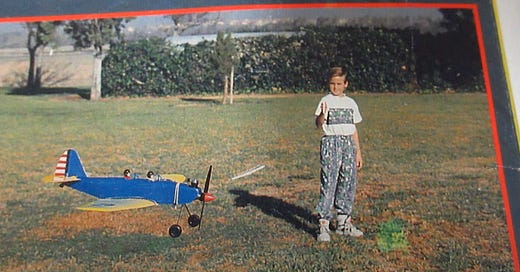
Why is this interesting? - Greasing the Groove Edition
On training, improvement, and not burning out your muscles
Colin here. Being locked in our homes has caused a full re-think of how we work out. There are no gym memberships, yoga studios, Crossfit, or anything resembling a normal routine. So most everyone has gone back to the drawing board in terms of how they keep themselves fit and limber. As a result, there’s a lot of online reading, studying, and sometimes re-formulating opinions of what works and what is good.
Before coronavirus, I had heard about the term “greasing the groove.” It is a technique espoused by legendary trainer Pavel Tsatsouline, a former Soviet Special Forces (Spetsnaz) instructor and the father of the kettlebell in the West. It was first latched onto by the Joe Rogan and the life hackers of the world but has since found a lot of momentum in wider fitness discussions. The key is that the normal approach many follow of working yourself to exhaustion isn’t just hard to keep up, it’s counterproductive. Olga Khazan in The Atlantic explains:
Tsatsouline advocates lifting weights for no more than five repetitions, resting for a bit between sets and reps, and not doing too many sets. For a runner, this would be like going for a four-mile jog, but taking a break to drink water and stretch every mile. Tsatsouline’s book suggests spending 20 minutes at the gym, tops, five days a week. In this way, he claims, you grease the neurological “groove,” or pathway, between your brain and the exercises your body performs. It’s not exactly the brutal routine you’d expect from someone billed as a Soviet weight lifter. But Tsatsouline contends this is the most effective way to build strength.
Why is this interesting?
Science (or pseudoscience) aside, the idea of greasing the groove runs contrary to what a lot of people think about fitness. Many exercisers, myself included, have always been told that working out to extreme exhaustion is the only way to really build muscle. If you don’t feel sore the next day, you didn’t work hard enough. The problem, of course, is that a) it’s hard to do, b) it’s dangerous, and c) requires an immense amount of motivation, something we now need to find from only internal sources.
Greasing the groove offers an alternative, espousing the use of lighter weights and avoidance of breakdown or muscle failure. Instead, you opt to do the easier work out more often than you would have otherwise. Here’s the Atlantic again:
Greasing the groove, in other words, might not actually be a secret Spetsnaz shortcut to getting ripped. But the loose way many people are interpreting the practice—try to get stronger in small bursts, whenever the opportunity presents—could offer something more valuable. Ria Heaton, a stay-at-home mom, started greasing the groove in the last year to increase the number of pull-ups she could do. Within about a month, she went from one to five—not as many as the most hardcore gym rats, maybe, but still a high number for a woman. Heaton’s explanation for why greasing the groove works is simpler than muscle fibers or perfecting technique. “The more you practice something, even a little bit at a time, the better you become at it,” she told me via email.
So what does this look like in practice? According to AOM:
Pick an exercise in which you want to become stronger. Bodyweight exercises like pull-ups, push-ups, and dips are best for greasing the groove as they’re easier to do on a regular basis than, say, barbell exercises.
Perform the exercise several times a day at low reps. When you grease the groove, you are NOT exercising to failure. That will only lead to overtraining and would get in the way of your main strength training program and overall progression. In fact, you don’t even want your GtG session to induce fatigue.
Rather, with greasing the groove, the goal is to do lots of reps a day, spread throughout the day. If you’re using a kettlebell, you want to keep the weight relatively low. You want to practice the skill of strength, but not become fatigued by it. You shouldn’t even break a sweat. Some folks recommend doing 40% to 50% of your max weight/reps, while others say 50% to 80%. My recommendation is to start conservatively, and gradually add volume and intensity throughout the weeks and months as your groove gets ever greasier.
Over this period of confinement, I’ve been trying this methodology to improve at stuff that I’ve never been great at. And it is interesting to see how with repetition, your muscles get used to a particular movement. Plus, if you aren’t going so hard as to be sore, it means you can do the movement the next day (or the following) in carefully metered doses. But this isn’t for every movement, most articles (and Pavel) recommend focusing on bodyweight things, but also Kettlebell swings seem to be a recurring workout. The idea is to practice the skill of strength, but not become completely fatigued by it. And in a time where we have a bit of downtime, it is a way to improve and optimize without doing a full-on gasping on the floor style of workout. (CJN)
Mix of the day:

We’ve long admired Dixon as an incredibly versatile and talented DJ. Here, for Boiler Room, he puts together one of his best sets in recent memory.
Quick Links:
Observing safe distancing via tape measure via BP (CJN)
A deep dive from Outside on the suckfest that is Army’s Ranger school. (CJN)
On mock submarine warfare (CJN)








